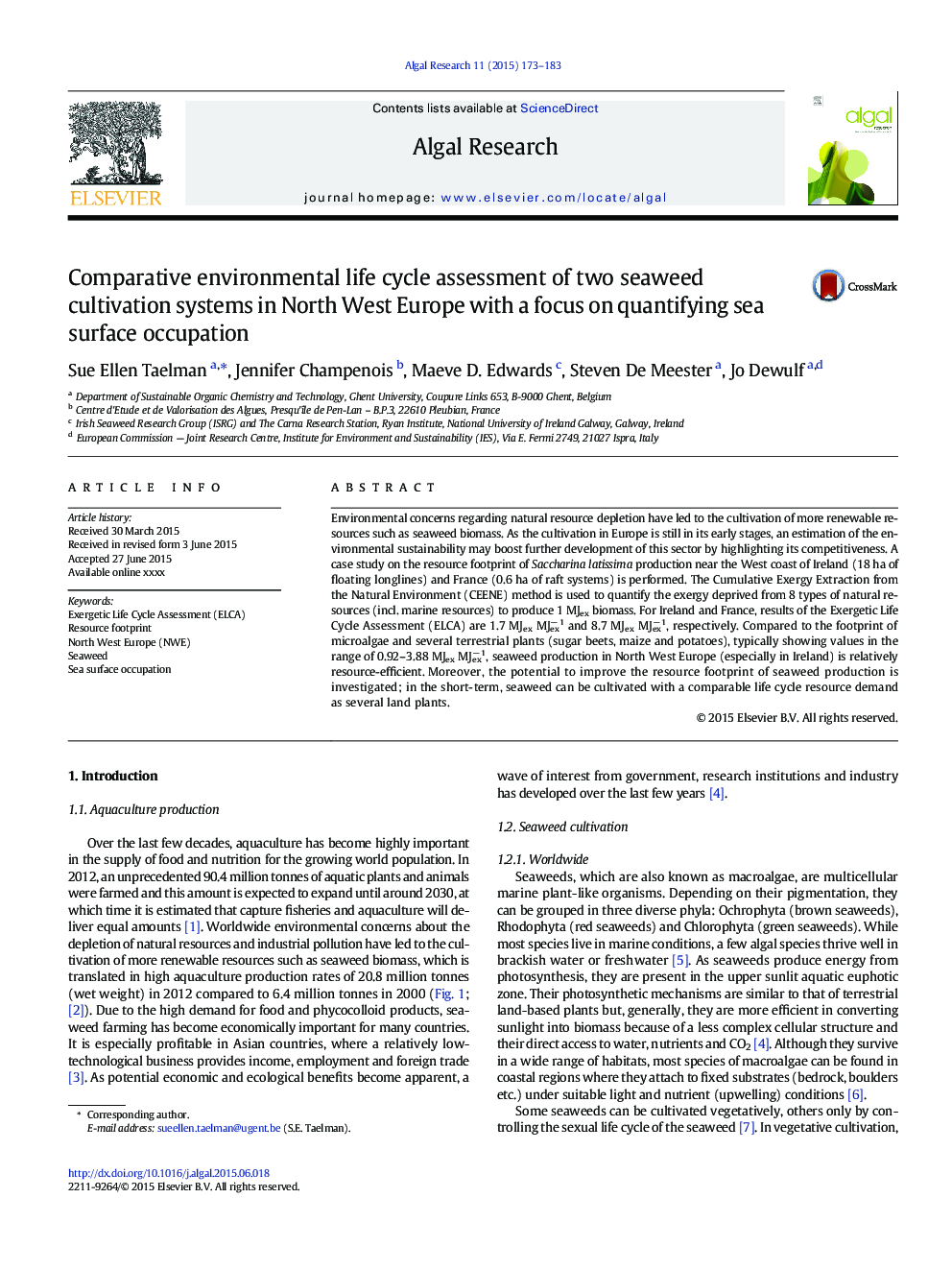| Article ID | Journal | Published Year | Pages | File Type |
|---|---|---|---|---|
| 8088120 | Algal Research | 2015 | 11 Pages |
Abstract
Environmental concerns regarding natural resource depletion have led to the cultivation of more renewable resources such as seaweed biomass. As the cultivation in Europe is still in its early stages, an estimation of the environmental sustainability may boost further development of this sector by highlighting its competitiveness. A case study on the resource footprint of Saccharina latissima production near the West coast of Ireland (18 ha of floating longlines) and France (0.6 ha of raft systems) is performed. The Cumulative Exergy Extraction from the Natural Environment (CEENE) method is used to quantify the exergy deprived from 8 types of natural resources (incl. marine resources) to produce 1 MJex biomass. For Ireland and France, results of the Exergetic Life Cycle Assessment (ELCA) are 1.7 MJex MJexâ 1 and 8.7 MJex MJexâ 1, respectively. Compared to the footprint of microalgae and several terrestrial plants (sugar beets, maize and potatoes), typically showing values in the range of 0.92-3.88 MJex MJexâ 1, seaweed production in North West Europe (especially in Ireland) is relatively resource-efficient. Moreover, the potential to improve the resource footprint of seaweed production is investigated; in the short-term, seaweed can be cultivated with a comparable life cycle resource demand as several land plants.
Keywords
Related Topics
Physical Sciences and Engineering
Energy
Renewable Energy, Sustainability and the Environment
Authors
Sue Ellen Taelman, Jennifer Champenois, Maeve D. Edwards, Steven De Meester, Jo Dewulf,
